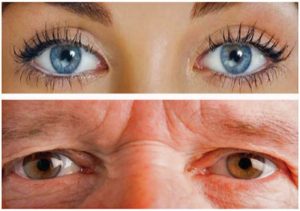Interesting ideas presented at the event
The second Semmelweis CEE Conference on Hospital Hygiene and Patient Safety was held last week in Budapest. HandInScan was one of the main sponsors of the conference, we are really proud that we can support such a high profile professional event. Main topic of the conference was Communication; why communication is important in infection control, and what we should know about it? Let us pick some interesting ideas presented at the event.
Didier Pittet: “Adapt to adopt”
“If you want people to adapt a new strategy, you need to let them adopt it. Adopt it to their resources, their believes, their culture.” For example the WHO ‘How to handwash’ poster now is widely adapted in various formats. Watch this video, where Didier Pittet talks more about the Adapt to Adopt conception.

Figure 1: Adapt to adopt; A: WHO ‘How to handwash poster’, B: traditional costumes
in Turmi, Ethiopa, C: Local adoption of the ‘How to handwash’ poster in Turmi.
Andreas Voss: Media plays an important role in shaping public opinion
In this study, Andreas Voss and his team examined stock photos about Health-care workers (HCW). They evaluated 1600 photos, and found that in 89% of cases doctors were dressed incorrectly on the picture. There are clear guidelines how a HCW must dress (e.g., uniforms should be closed and short sleeved, not wearing watch, bracelet, rings). The media pictures a typical MD quite differently: a doctor according to photo-stock pictures was typically a male with a long-sleeved white coat. This result shows that infection control guidelines are largely ignored by public opinion. Clearly an area to be developed.

Figure 2: Example of a faulty photo. Doctor with open uniform, long sleeves,
personal sleeve visible and wearing a watch. Source: Spierings et al. 2015
Infection control should learn from the behavioral science
Speakers have mentioned this interesting article wrote by King et al. several times. They applied priming in infection control. Psychological priming is the process by which exposure to certain cues (e.g., words, smells, or images) alters behavior without the person being aware of the impact of the cue on their behavior. In that case, the cue was being watched, which more widely has been seen to encourage prosocial behaviors. During the intervention, photos of eyes were displayed above the dispenser, and it worked. In case of the male eyes hand hygiene compliance increased significantly, from 15% to 33%. These findings are especially important, because sticking a pair of eyes above the handrub dispenser is an extremely cost-effective way to improve hand hygiene compliance.

Figure 3: Photos of eyes displayed above the dispensers. Source: King et al 2016.
Maryanne McGuckin: Patient empowerment works
We should educate patients before they are hospitalized. Therefore, we recommend to everyone to read this book, the “The Patient Survival Guide“.

Figure 4: Maryanne McGuckin: The Patient Survival Guide
It was nice to see that the participants of the conference were really open to innovation. Our Semmelweis Scanner was tested by more than a hundred of them within the frames of a hand hygiene competition. One champion of them won a 1-month free trial of our Semmelweis Scanner. Congratulations!
We are looking forward to the next Semmelweis conference, and hope that we can also take a leading part in it—again.
Read our previous post about the first Semmelweis CEE conference on Hospital Hygiene and Patient Safety.